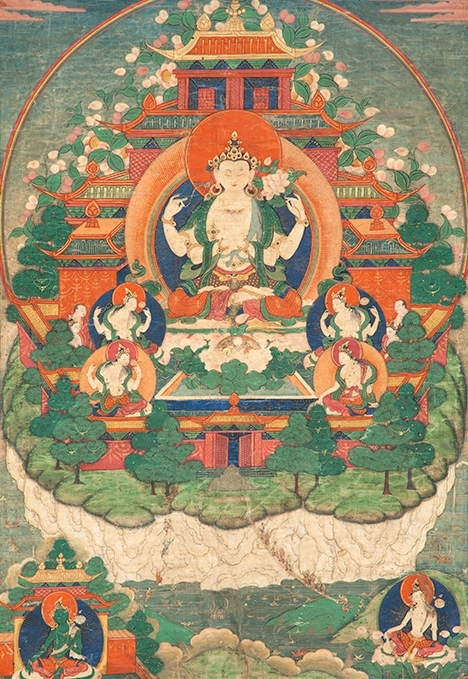
Avalokiteshvara, the bodhisattva of compassion and the patron deity of Tibet, presides over his celestial dwelling of Mount Potalaka, believed to be an island off the coast of Western India. Adorned in silks and jewels, the four-armed Avalokiteshvara holds crystal rosary beads in his upper right hand and a lotus flower in his upper left, both signifying purity. His other pair of hands folded at the heart in a gesture of salutation. Green Tara, saviour from fears, is seated in her pure realm of Sandalwood Grove in the lower left corner, and in the lower right is Padmapani, another form of Avalokiteshvara. Both are deities closely related to the central figure.
Unique details punctuate this resplendent scene—tiny figures climb the rope and cross the bridge toward Potalaka, representing the wish of Buddhists to attain rebirth in this realm, and a self-arisen image of Avalokiteshvara carved in a rock formation appears in front of the open gate. The silk brocade border reinforces the vivid colors and the images of the painting, extending outward to engage viewers to enter the pure realm themselves.
Interestingly, Japanese Buddhists espoused rebirth in Potalaka as an easier path to liberation than Buddha Amitabha’s Sukhavati.
C2012.4.5 , HAR 1094
- https://dev.rubinmuseum.org/images/content/6265/c2012.4.5__zoom.jpg
- https://dev.rubinmuseum.org/images/content/6265/c2012.4.5__zoom.jpg

